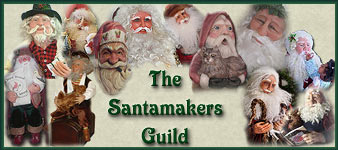Saturday, November 5, 2011
Laying Out The Face
Here we go, people! Getting down to business! As I said earlier, start out with a birch wood dowel 1-1/2" in diameter and about 6" long. You can start with a branch if you want, but I recommend commercial wood to learn on because of its consistency.
The first thing you want to do is draw a center line down the length of the dowel. It doesn't have to be exact. (You'll be hearing that OFTEN!). I put my pinky against the dowel and pulled my hand down the length with the point of the pencil against the wood. This will help you keep both sides of your carving more or less symmetrical. I say "more or less" because absolute symmetry is not only unnecessary, it is unnatural!
Now we are going to start laying out the face. You might notice that I haven't mentioned anything about a "pattern". That's because I think patterns for this type of carving are unnecessary and stifle creativity. If you learn to carve without a pattern, every carving will be different. And that's the way it should be! It's more fun to be surprised when the face emerges from the wood. Draw a short line across the center line roughly an 1-1/2" down from the top. This will be the location of your face's hair line. This will give you room on the bottom for a flowing beard. We are going to be doing a woodspirit with long hair and a flowing beard. I chose this for the very good reason that it will allow you to concentrate on the eyes, cheeks and nose (where most people have issues) without worrying about ears and chin.
Now let's talk about facial proportions. Absolute measurements are NOT important. Close is good enough. Remember the "Rule of Three". Take a look at The Woodbee Carver's site for a good diagram. Also check out his blog. It'll be well worth your time. In addition to what you see there, the width of the face (we are going to use the whole width of the dowel for that) is 2/3 of the distance from the hair line to the chin. So, using the precision caliper that is my hand and pencil I measure the diameter of the dowel.
I transfer that measurement to the front of the dowel by putting my thumb at the hair line mark, then lift my hand until the tip of the pencil contacts the wood, where I make a small mark. I extend that mark a bit so that it is more visible. This gives us the location of the bottom of the nose.
Since the distance from the hair line to the eye line is 1/3 the length of the face, all we have to do is divide the distance we just marked off in two by placing a line ABOUT half way between the two lines we've already drawn. Now we have the location of the eye line.
The distance from the nose line to the chin line is equivalent to the distance from the eye line to the nose line. So, using that precision set of calipers you have on the end of your arm, measure that distance, move your thumb to the nose line, and make a mark on the center line. This gives you the location of the chin. You may ask that if we are going to cover the lower part of the face with a beard, why do we need to know where the chin is. Even though the chin will be covered it will still affect the shape of the beard, so we need to know where it is.
You should now have something that looks like this. You have now located all the major features of the face we are going to carve.
Now I suggest that you take the hair line and extend it in a more or less natural curve out to the sides of the dowel and down to below the nose line. This is the starting point for all the hair that will be on this guy. You should extend the facial lines out past the hair line, because you will be carving these marks away as you work. You'll want to redraw those line several times, so it helps to have them where they won't be carved away.
We'll stop at this point for now. Next time we'll actually put knife to wood!
So, until then, let those chips fly!
Subscribe to:
Post Comments (Atom)














No comments:
Post a Comment